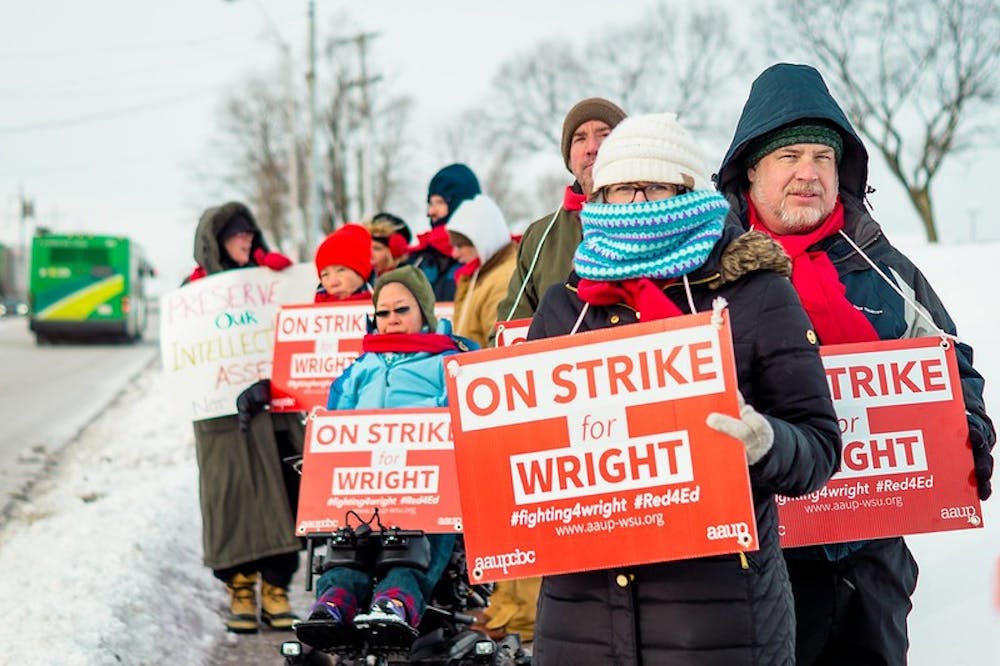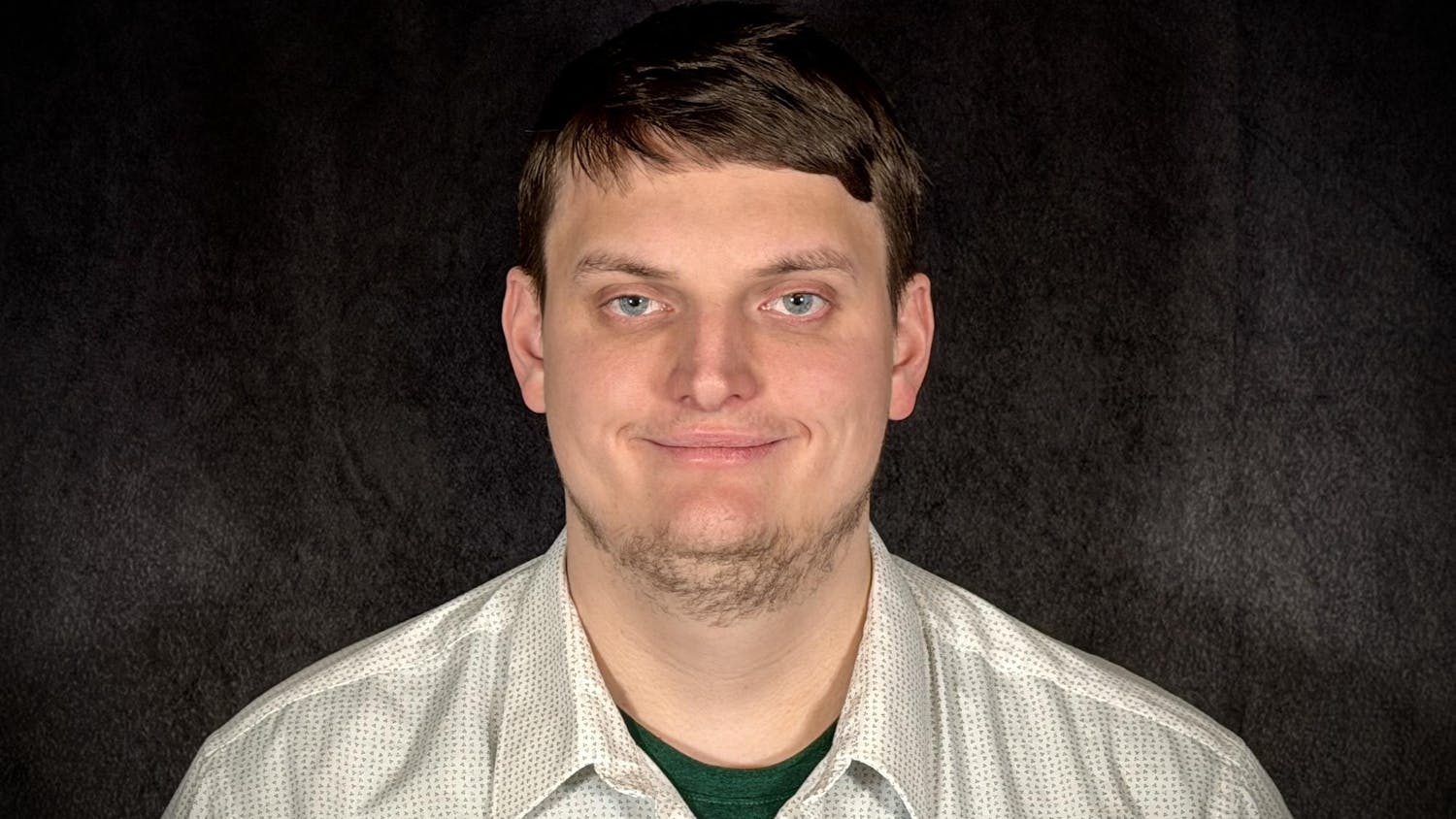Faculty Strike | Photo by Soham Parikh | The Wright State Guardian
Being a student at Wright State University (WSU) in 2019 was a difficult task as professors took to the front lines to fight for a proper employment contract.
“The strike was very hard for a lot of students like me who need their professor to be there for them,” said WSU student Colten Purves. “I am not a naturally good student so I needed my professors to help me”.
Students were met by random adjunct faculty and administrators running their courses for three weeks, or even having their classes canceled for nearly a month as they were finally being made aware of contractual issues that had begun to become public.

On Jan. 22, 2019, WSU made national news as faculty began one of the longest strikes in U.S higher education history. Hundreds of faculty and students manned the picket line to protest a new employment contract imposed by the Board of Trustees.
On Jan. 22, 2019, WSU made national news as faculty began one of the longest strikes in U.S higher education history. Hundreds of faculty and students manned the picket line to protest a new employment contract imposed by the Board of Trustees.
Just a year before the strike, WSU was on the verge of going into fiscal watch when Cheryl Schrader took over as president.
“I don’t think people really knew the extent of the financial challenges of the university, and so that was quite eye-opening in understanding where the institution really was,” said former president Cheryl Schrader.
In the course of eighteen months, President Schrader was able to help the university completely turn around their financial struggles and avoid fiscal watch altogether.
During this time, the WSU chapter of the American Association of University Professors (AAUP) was working on negotiating a new employment contract with the Board of Trustees. This event occurs every three years on average. However, the faculty were blindsided when the Board of Trustees proposed several significant benefit cuts with little to no room for negotiation able to occur.
“The news tended to want to keep it [the reasons for the strike] simple and clear, so they would share one or two issues for the strike, like salary or health care. And of course, those are important but there were so many other things that were important,” said the current president of the WSU Chapter of the American Association of University Professors, Noleen McIlvenna.
Issues that led to the strike included zero ability to negotiate better health care, no pay raises, job security for tenured faculty, and many other topics that the faculty felt were due for more negotiation than they were able to convince the Board of Trustees to partake in. The infamous strike was a last-ditch effort to be heard.
And anyone who partook in the strike would say it was not something anybody wanted to occur.
“Surviving it [the strike] and immediately after were definitely the low points in my professional career. [It] was extremely challenging as you would imagine,” said Faculty Senate President
Laura Leuhrmann. “And I think everybody looking back on it recognizes it was very difficult and it was difficult importantly on everybody in the community.”
For 21 days, faculty members picketed for their right to negotiate. While many students were trying to learn in the classroom with adjunct faculty and administration, some joined into the efforts to advocate for their professors.
“It’s amazing how unified our student groups are on campus. Lots of students understood what was going on joined their professors out on the line over those three weeks.
And, to be fair, there were some students who disagreed with the strike. In both cases, the students had a lot to say and were able to get a firm message across.” said then AAUP Contract Administrator Robert Rubin.
Not every student on campus felt as though the strike was justifiable; in fact, a lot of students felt betrayed by their professors who spent their days advocating rather than teaching.
“When the strike was over, our professors wanted to continue things as usual and get back on track. Whether they wanted to say it or not, they abandoned us and expected us to be okay with it,” said Purves. “We as students definitely suffered because some professors didn’t want to get their message to the university the right way.”
After three weeks of protesting, the faculty strike came to an end on Feb. 10. A weekend full of negotiations led to an agreement that both the Board of Trustees and the WSU AAUP were content with; however, the weeks following were just as difficult as the strike.
“Immediately after the strike [something] that we continue to face is the need to rebuild trust, and just like every relationship, it's very multifaceted trust between the faculty and the staff, trust between faculty members, who some of my closest friends, were not out on strike for a variety of reasons,” said Leuhrmann.
Two years have passed since the strike, and even with changes in administration since then, there is still a sense of distrust across the board.

“I think they kind of have a right to not trust. But I think hopefully, over time, they will realize there [are] no lies from me,” said current WSU President Sue Edwards. “I think it's going to take a long time to trust [administration]. I think trust is the hardest thing to repair and takes a long time”.
“I think they kind of have a right to not trust. But I think hopefully, over time, they will realize there [are] no lies from me,” said current WSU President Sue Edwards. “I think it's going to take a long time to trust [administration]. I think trust is the hardest thing to repair and takes a long time”.
While faculty and administration work to rebuild trust, not all WSU faculty have faith that the next round of negotiations will go over well.
“Things are smooth right now because there are no negotiations, nothing to fight about. We have the expectation that during the next contract negotiations they won’t do the same thing again,” said Dr. McIlvenna. “I’m nervous for the next set of negotiations. When you ask me to project into the future, I have no reason to believe they really learned much. But it is three years away, so I’m not that nervous yet.”
Other WSU faculty are taking a more neutral approach to the situation and are trying to move past the strike for the betterment of the students.
“We don't have to agree on particular issues. All we have to agree [on is] that we're on here about educating our students, and I think I don't know anybody that would disagree with that. People do not take striking lightly, it is an absolute last resort,” said Leuhrmann.
Then, some faculty at WSU believe that we can only continue going uphill from here.
“I got into this business because I want to be a faculty member, I want to teach students, so you have to remember administration isn't somebody that just kind of flew in from a bank or something,” said President Edwards. “We're an underdog for the wrong reasons. I actually think that we're a shining star. But I think people just don't know how good things could be here.”
Reviews are mixed as to how the Board of Trustees and the AAUP will be able to collaborate post-strike, but one thing is for sure: No one has any plans to stand out on the picket line anytime soon.










